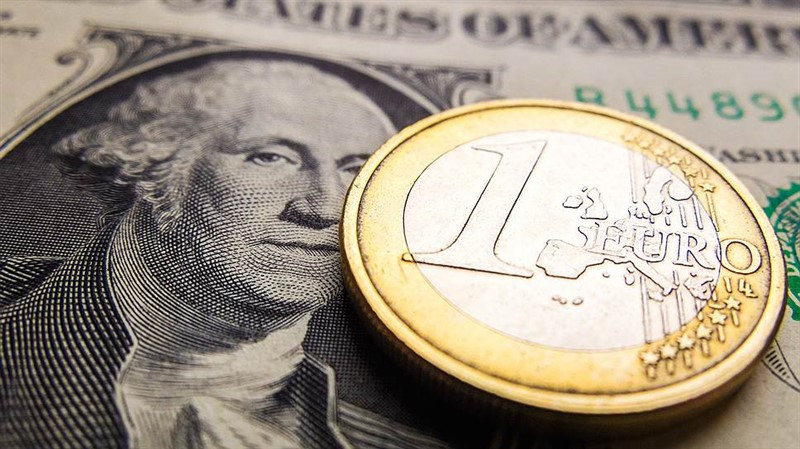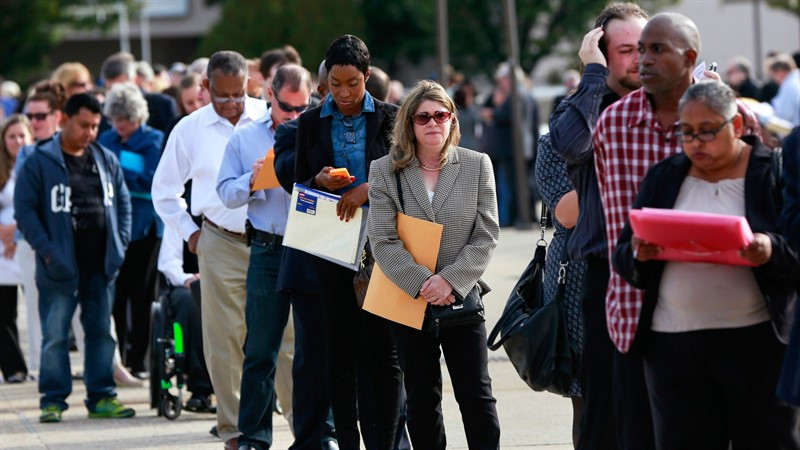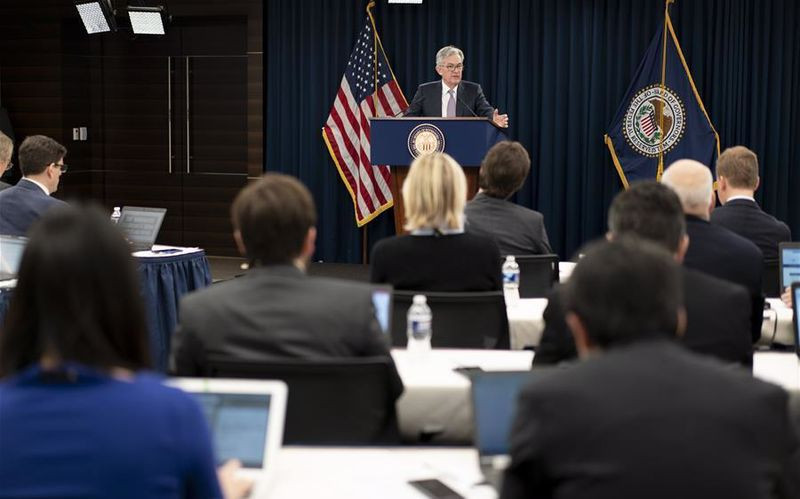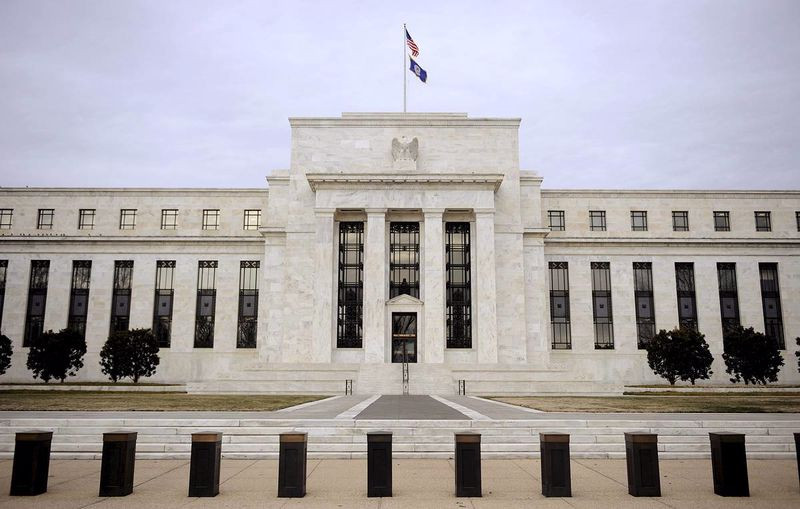
Less than two weeks ago, the words of Federal Reserve Chairman Jerome Powell that the central bank's plans to raise interest rates would not lead to a slowdown in the growth of the national economy, allowed market participants to consider the issue of tightening monetary policy in the United States resolved.
Fears that the Fed could throw the stock market under the bus to eradicate high inflation led to the strongest weekly drop in the S&P 500 index since the beginning of the pandemic in March 2020 (by 5.7%).
The shares suffered due to investors' concern for the fate of the corporate sector, which will lose cheap money during the deterioration of macro statistics in the country.
Thus, retail sales in the United States in December decreased by 1.9% compared to the previous month, although experts did not expect a change in the indicator.
Last month, the volume of industrial production in the country decreased by 0.1% with an expected growth of 0.3%.
The consumer confidence index from the University of Michigan in January sank to 68.8 points from 70.6 points recorded in December, which was the second lowest level in a decade.
The number of initial applications of Americans for unemployment benefits for the week ending January 15 increased by 55,000, reaching 286,000, which is the highest since mid-October.

According to analysts polled recently by Reuters, the US economy probably grew at an annualized rate of 5.9% last quarter and will slow down to 2.9% this year, which is lower than the 6.0% and 4.0% predicted just a month ago.
U.S. GDP is projected to expand by an average of 3.8% and 2.5% this year and next, compared with 5.6% in 2021.
The majority of respondents noted that steadily rising inflation poses the greatest risk to the American economy over the next 12 months.
Recent statements by the leadership of the Fed suggest that the central bank does not focus on stimulating the growth of the national economy, namely, the fight against price increases.
The central bank intends to overcome inflation by raising the key rate, as well as by reducing the volume of securities on the balance sheet.
How these two policy instruments interact remains a matter of debate, as well as their possible impact on inflation, a variable that the Fed is ultimately trying to control.
Even with three rate hikes and a smaller balance sheet in the near future, some analysts believe that the Fed will have to do more to bring price increases in line with the 2% inflation target. Others say that the central bank, most likely, will not make sudden movements and will adjust monetary policy taking into account the situation around the coronavirus, as well as based on indicators on the labor market and inflation.

Goldman Sachs strategists do not exclude the possibility that this year the Fed may raise rates at every meeting starting in March, that is, seven times: in March, May, June, July, September, November and December. However, the bank's basic forecast still implies four quarterly increases (in March, June, September and December) and an announcement in July about the beginning of a reduction in the balance sheet.
"Inflationary pressure means that the risks are to some extent shifted towards a faster pace of monetary policy tightening in the US than our baseline scenario suggests. There is a possibility that the central bank will act at every meeting until the inflation picture changes. This increases the chances of another rate hike or the announcement of the beginning of a reduction in the balance sheet in May, which implies more than four rate hikes this year," Goldman Sachs analysts noted.
Meanwhile, Societe Generale analysts believe that the Fed is likely to rebuff the expectations of market participants who are pricing in more than four Fed rate hikes in 2022 in connection with the central bank's preparations for the start of an active reduction in the size of the balance sheet in the second half of the year.
"Although the central bank is firmly committed to fighting inflation, its policy is likely to continue to remain accommodative," they said.
US health officials hope that the current outbreak of COVID-19 in the country caused by the Omicron variant will soon subside, but it has already slowed down hiring and the recovery of the national economy.
Some experts now predict that the US economy will eventually lose jobs in both January and February. This would leave the Fed with a difficult choice of raising interest rates in March in the face of declining employment.
On the eve of the so-called "period of silence", Atlanta Fed President Raphael Bostic said that the depth of the dilemma partly depends on the degree to which inflation will decrease by itself.
This could happen if the virus really weakens and more workers return to their jobs, increasing the supply of goods and services and reducing the pace of wage increases, or if global supply disruptions subside.
However, there is no guarantee.

"Before the outbreak of the coronavirus pandemic, the Fed was struggling with the dynamics that constantly kept inflation below the target level of 2%, and there is an opinion that as soon as we overcome the pandemic, these forces will take over again, so we will not need such an aggressive policy. However, none of us, entering the pandemic, did not assume that inflation would be as high as it is now. So the question is how decisively or fully we should react," Bostic said.
Although the Fed is not likely to raise interest rates until March, concerns about inflation and the prospect of tightening monetary policy in the US are forcing players to buy safe assets.
The main Wall Street indexes suffered heavy losses on Friday, and the yield on 10-year US Treasury bonds fell for the second consecutive day, losing more than 2%. This did not allow the dollar to strengthen against its main competitors.
The USD index, which rose to a high of more than a week at 95.85 on Thursday, ended the last five days in the red zone, near 95.60.
Meanwhile, the EUR/USD pair rose to 1.1360 during Friday trading, but then fell back to 1.1340. Nevertheless, at the end of the day, the euro rose in price against the greenback by almost 0.3%.
However, the greenback recovered fairly quickly after its recent weakening, and the EUR/USD pair could not maintain the bullish momentum and began to lose ground at the start of the new week.
Key US stock indexes are mostly declining on Monday, losing an average of 2-3%, as investors prefer to abandon risk before the announcement of the results of the Fed meeting, which will be held on January 25-26.

The continuing uncertainty regarding the further actions of the US central bank supports the dollar and puts pressure on the main currency pair.
Currently, the USD index is trading with an increase of more than 0.4%, flirting with the 96.00 mark.
Further resistance is at 96.46 (the high of 2022 from January 4) and 96.93 (the peak of 2021 from November 24).
The constructive position of the greenback is still supported by the 200-day moving average, which is now at 93.25.
Being under bearish pressure, on Monday the EUR/USD pair sank to the lowest level in two weeks just below 1.1300.
Credit Suisse considers the recent growth of the main currency pair a simple correction and says that a decline below 1.1272 will signal the resumption of the underlying downward trend.
"The daily MACD is turning down again, and this reinforces our baseline scenario that the pair's consolidation since November and its recent growth are just a correction phase before the resumption of the underlying downward trend," the bank's strategists said.
"The key support remains at 1.1292-1.1272 (recent lows and an upward trend since November). A breakthrough in this area will confirm the completion of the formation of the bearish pattern and will cause the resumption of the underlying downward trend in the direction of 1.1234-1.1223. Next, the pair may visit the area of 1.1186-1.1168 again. In the broader perspective, we continue to expect a decline in quotes to our main target - 1,1019-1,1002. Resistance at 1.1370 should ideally restrain the bulls in order to maintain the current downside risks. Its breakdown may return the pair to the area of 1.1423-1.1436," they added.
 English
English 
 Русский
Русский Bahasa Indonesia
Bahasa Indonesia Bahasa Malay
Bahasa Malay ไทย
ไทย Español
Español Deutsch
Deutsch Български
Български Français
Français Tiếng Việt
Tiếng Việt 中文
中文 বাংলা
বাংলা हिन्दी
हिन्दी Čeština
Čeština Українська
Українська Română
Română

